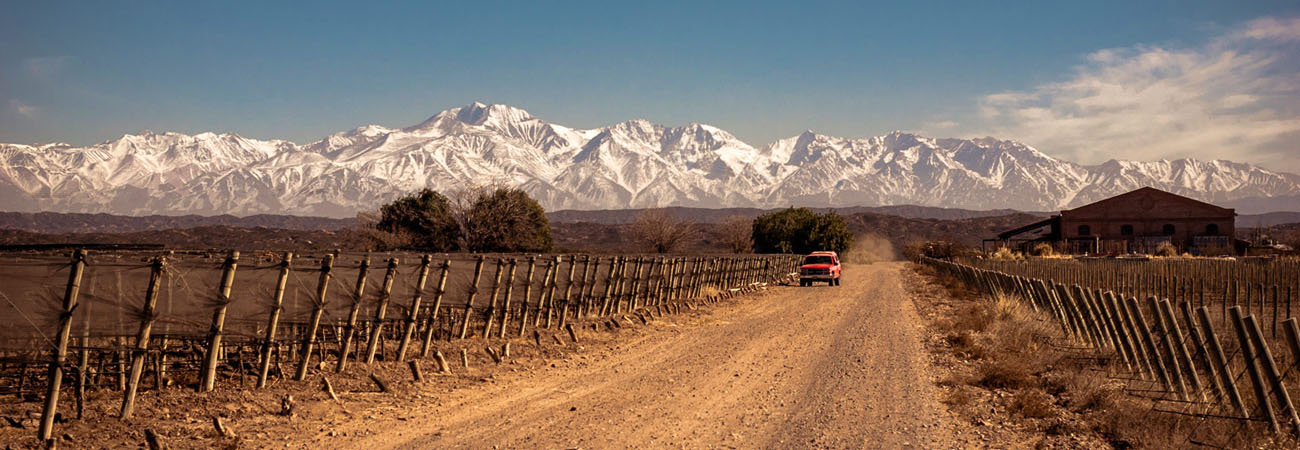Intense, challenging and thought-inducing, harvest 2020 will be very remembered by the team of ants and by the entire wine community in Mendoza.
This harvest has been defined by three most relevant points.
Climate change
According to the data provided by Argentina’s national Department of Agriculture, this vintage in Mendoza registered the hottest minimum temperatures of the last ten years, in line with the rest of Argentine wine-producing regions. Being 30° Celsius the threshold for a vine, above which it ceases to perform its natural photosynthesis cycle, the month of January registered 90% of days above this limit.

We are experiencing a climate change that is causing more and more frequent temperature peaks. Heatwaves are not an isolated phenomenon but a recurrent reality and our adaptation as viticulturists is no longer an option but an obligation.
In an effort to put something complex in a few words, we now must take care of our vine’s root system, our soil’s properties and our viticulture in general in order to foster a deep and stable root system that can cope with heatwaves. On another front, in the upper part of the plant, we must protect the grapes as much as possible from direct sunlight, especially during the hottest part of the day.

At Altos Las Hormigas, we have been working for 8 years to change our viticulture so our vines develop deep roots, working with native vegetation, different soil types in different areas and fostering biodiversity in the vineyard so that the roots will grow reaching different depths. We also put a greater precision in our irrigation practice, using water to direct root development toward deeper soil. All these actions together are part of our strategy to ultimately generate deep roots in our vineyards.
From the canopy’s point of view, the aerial part of the plant, we foster leaf coverage on the grapes to create a natural sunscreen, not falling into poor vigor management or tight canopies. We do not defoliate, but we search for a balance of shadow and light on the grapes, always trying to escape direct sunlight to avoid burnt or caramelized fruit aromas.

We are currently working in our Jardin Altamira vineyard, making trellising system essays on a productive scale, which will allow us to protect the grapes from direct sunlight and high temperatures, and will serve as a basis to generate an organic management plan that complements these systems, in order to make them viable at the long term. We will soon have news on this!!
What is fundamental in these practices is that they are all long term works; they are not something to be resolved from one year to another, but they take a minimum of 2 to 3 season for a full adaptation of the entire system, as well as constant evaluation and improvements.
Harvest in Pandemic times
World pandemic COVID-19 has put to test human, social and family values, showing everyone’s less or more human side, and has definitely marked this vintage.

The effort and commitment of the team to safely get on with this harvest, in the middle of such an uncertain context, has been fundamental. Following our early harvest philosophy, looking for the optimal ripeness level and avoiding over-ripeness, we managed to finish harvesting before lockdown began in Argentina; and this was very lucky. Afterward, in the winery, we were also able to complete the winemaking processes, always taking care of the staff, keeping the security measures, and counting on the collaboration of our great team, which is growing stronger every year. We were even able to complete fermentation with native yeasts, a tradition in Altos Las Hormigas.
Jardin Altamira
The first harvest: Sometimes dreams, with lots of efforts, perseverance, and determination do come true. Jardin Altamira is one of those dreams.

2020 was the first harvest in this vineyard, which was born from thinking a vineyard “plugged” in its natural environment. We have taken the first step into re-think, re-shape and re-live Terroir wines, by planting a vineyard that integrates with native flora and fauna, plants and animals, designing plots according to soil profiles and managing it all organically. This is a radically innovative approach, a departure from what is deemed as “modern” viticulture and a revival of the traditional ways, those widely applied before the spread of monoculture techniques.
With its Jardin Altamira, Altos Las Hormigas has opened a gate… a gate that is also an invitation. Follow the ants to discover more!

